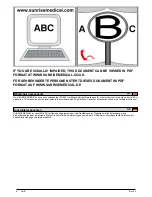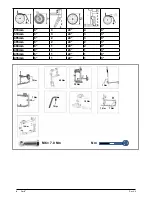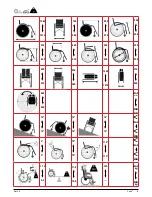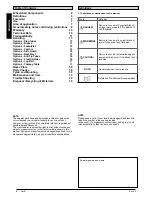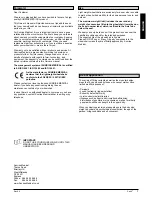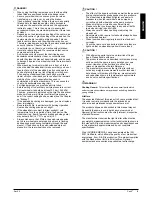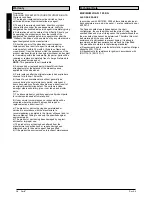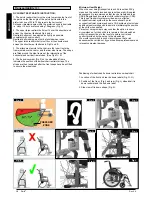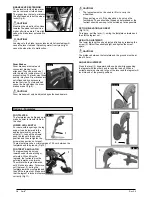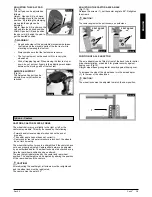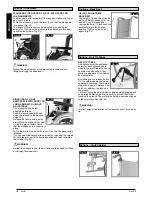
13
PariX
2
ENGLISH
Rev.2.0
Handling
FOLDING UP
First remove the seat cushion from
the wheelchair and flip up the
(platform) footplate or the individual
footrests. Take hold of the sling or
the seat tubes in the middle, from
the back and pull upwards. The
wheelchair will then fold up. To fold
your wheelchair so that it is as
small as possible, e.g., to put into a
car, you can remove the footrests
(depending on the model). For this
purpose, open the latch from the
outside and swing the footrest to
the side. Then the footrest only has
to be drawn out of the receiver tube
(Fig. 1).
UNFOLDING
Press down on the seat tube (see
figure). Your wheelchair is then
unfolded. Now snap the seat tubing
into position in the seat saddle.
This can be facilitated by slightly
tipping your wheelchair, as this
means that the weight is taken off one of the rear wheels. Be
careful not to get your fingers caught in the cross-tube assembly.
Refit the seat cushionl (Fig. 2).
FIG. 1
FIG. 2
GETTING INTO YOUR WHEELCHAIR
INDEPENDENTLY
(FIG. 3)
• The wheelchair should be pushed up
against a wall or solid piece of furniture;
• The brakes should be on;
• The footplates should be hinged up;
• The user can then lower himself into the
chair;
• The footplates should then be pushed
down and the feet rested on them in front
of the heel loops.
GETTING OUT OF YOUR WHEELCHAIR
INDEPENDENTLY (FIG. 4)
• The brakes should be on;
• The hinged footplates should be hinged
up;
• With one hand on each armrest, the
person should bend slightly forward to
bring the body weight to the front of the
seat, and with both feet firmly on the ground, one foot well
back, push up into the upright position.
WARNING!
When standing, do not stand on the footplates or the wheelchair
will tip up. It is easier and safer to get into your wheel chair if you
turn the footplates up and out of the way or take them off the
wheelchair.
FIG. 3
FIG. 4
Options - Step Tubes
STEP TUBES
(FIG.5)
Step tubes are used by attendants to tip a
wheelchair over an obstacle. Simply step
on the tube to push a wheel chair, for
example, over a kerb or step.
CAUTION!
Sunrise Medical strongly reccommends
the use of a step tube on any model
where attendant use is the predominant
intended use. Damage to the backposts
may occur if you constantly use the backpost without a step
tube, as a lever to pull back on to tip the wheelchair, in order to
overcome obstacles.
FIG.5
Options - Brakes
WHEEL LOCKS
Your wheelchair is equipped with
two wheel locks. They are applied
directly against the tyres. To
engage, press both brake levers
forward against the stops. To
release the locks, pull the levers
back to their original positions.
Braking power will decrease with:
• Worn tyre tread
• Tyre pressure that is too low
• Wet tyres
• Improperly adjusted wheel locks
The wheel locks have not been
designed to be used as brakes for
a moving wheelchair. The wheel
locks should therefore never be
used to brake a moving wheelchair.
Always use the hand-rims for
braking. Make sure that the gap
between the tyres and wheel locks
complies with given specifications.
To readjust, loosen the screw and
set the appropriate gap. Then re-tighten the screw (Fig. 6 + 7).
CAUTION!
After each adjustment of the rear wheels, check the wheel lock
gap and re-adjust if necessary.
FIG. 6
FIG. 7
18.0MM


